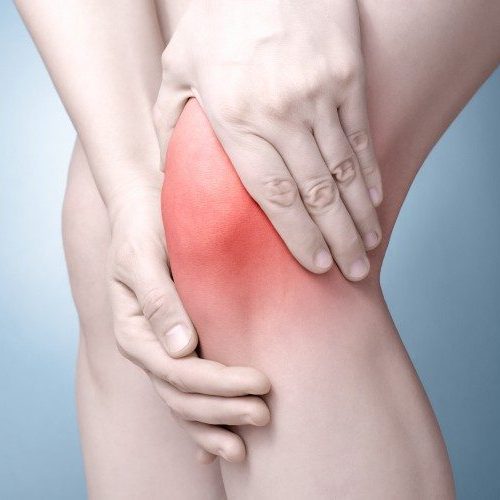Knee Pain
Knee pain has a strong relationship to our feet and the rest of our lower limbs.
A lot of knee pain can be resolved very easily and treatment is always more effective if applied sooner rather than later.
Knee pain is commonly related to our feet and their alignment.
Chronic or ongoing knee pain in adults and children can be resolved quite easily and treatment is always more effective if applied sooner rather than later. This is especially in case where knee pain has not been the result of a traumatic incident or accident.
Chronic knee pain is long-term pain, swelling, or sensitivity in one or both knees.
The cause of your knee pain can determine the symptoms you experience. Many conditions can cause or contribute to chronic knee pain, and many treatments exist. Everyone’s experience with chronic knee pain can be different.
Causes of knee pain
Podiatrists normally treat chronic or long term knee pain that is caused by abnormalities in foot posture or poor biomechanics. An altered foot posture which leads to an altered walking pattern can cause strain and overuse of certain structures (esp. joints and soft tissue) of the knee. This can lead to pain.
The most common cause of knee pain related to the feet is excessive foot flattening or rotation, which can force the knee to roll inwards in an abnormal position. People with high arched feet may also have knee pain, due to the feet not absorbing shock very well during gait.
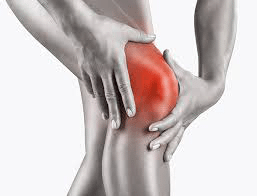
Physical conditions or diseases can cause knee pain.
These include:
- Osteoarthritis: pain, inflammation, and joint destruction caused by degeneration and deterioration of the joint
- Tendinitis: pain in the front of the knee that is made worse when climbing, taking stairs, or walking up an incline
- Bursitis: inflammation caused by repeated overuse or injury of the knee (see our Bursitis page for more details)
- Chondromalacia patella: damaged cartilage under the kneecap
- Gout: arthritis caused by the build-up of uric acid (see our Gout page for more details)
- Baker’s cyst: a buildup of synovial fluid (fluid that lubricates the joint) behind the knee
- Rheumatoid arthritis (RA): a chronic autoimmune inflammatory disorder that causes painful swelling and can eventually cause joint deformity and bone erosion
- Dislocation: dislocation of the kneecap most often the result of trauma
- Meniscus tear: a rupture in one or more of the cartilage in the knee
- Torn ligament: tear in one of the four ligaments in the knee — the most commonly injured ligament is the anterior cruciate ligament (ACL)
- Bone tumors: osteosarcoma (second most prevalent bone cancer), most commonly occurs in the knee
What should I do if I have knee pain?
Foot posture is often overlooked as a cause of knee pain. If you suspect that you have a knee problem that is related to poor foot posture or biomechanics during standing, walking or running you should arrange a Podiatry appointment as soon as possible to allow you to continue with your normal everyday life without pain.
What shouldn’t I do if I have knee pain?
If you have knee pain it is not advisable to ignore the pain as you may be causing more long term, permanent damage to the joint. So early diagnosis and treatment is the key to prevent long term and irreversible problems.
Could there be any long term effects of knee pain?
If your foot posture is causing your knee pain then it is unlikely to resolve without treatment.
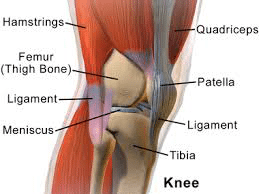
Diagnosis
During the examination, your Podiatrist is likely to:
- Inspect your knee for swelling, pain, tenderness, warmth and visible bruising;
- Check to see how far you can move your lower leg in different directions;
- Push on or pull the joint to evaluate the integrity of the structures in your knee; and
- Examine your gait to determine if poor biomechanics, foot or ankle posture may be contributing to your problem.
Imaging tests
In some cases, your Podiatrist might suggest tests such as:
- X-ray. Your Podiatrist may first recommend having an X-ray, which can help detect bone fractures and degenerative joint disease.
Computerized tomography (CT) scan. CT scanners combine X-rays taken from many different angles, to create cross-sectional images of the inside of your body. CT scans can help diagnose bone problems and detect loose bodies. - Ultrasound. This technology uses sound waves to produce real-time images of the soft tissue structures within and around your knee, and how they are working. Your Podiatrist may want to manoeuvre your knee into different positions during the ultrasound, to check for specific problems.
- Magnetic resonance imaging. An MRI uses radio waves and a powerful magnet to create 3-D images of the inside of your knee. This test is particularly useful in revealing injuries to soft tissues such as ligaments, tendons, cartilage and muscles.
Treatment of Knee Pain
Treatments will vary, depending upon what exactly is causing your knee pain.
Medications
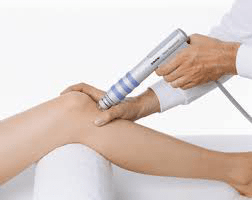
Your Podiatrist may prescribe medications to help relieve pain and to treat underlying conditions, such as rheumatoid arthritis or gout.
Physical Therapy: Exercises to strengthen muscles around your knee will make it more stable. Training is likely to focus on the muscles on the front of your thigh (quadriceps) and the muscles in the back of your thigh (hamstrings). Correcting suboptimal movement patterns is also helpful, along with establishing good technique during your sport or activity. Exercises to improve your balance also are important.
Shockwave Therapy has proven to be very extremely successful in treating chronic knee pain. Results are often experienced within a couple of visits and treatment is typically convenient, drug free and a walk-in, walk-out, walk out procedure. (See our Shockwave Therapy page for further information.)
Orthotics, arch supports and knee braces can help to shift pressure away from the side of the knee most affected by osteoarthritis. In certain conditions, different types of braces may be used to help protect and support the knee joint. (Refer to our Orthotic Therapy page for more details, and view our Spenco range of arch supports.)
Swiss DolorClast® : Patellar Tendinopathy – (RSWT®) Radial Shock Wave Therapy
Following an initial assessment and gait analysis, orthotics (shoe inserts) can be provided by your podiatrist to resolve your pain. For the majority of patients, these orthotics have customised correction that helps improve alignment and control pronation (‘flat feet’). This reduction in pronation of the foot helps to reduce stress on the knees.
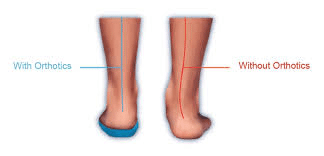
Injections
In some cases, your Podiatrist may suggest injecting medications or other substances directly into your joint. Examples include:
Prolotherapy or Corticosteroids. Ultrasound guided injections into your knee joint may help reduce the symptoms of an arthritis flare and provide pain relief that lasts a few months.
If you have an injury that may require surgery, it’s usually not necessary to have the operation immediately. Before making any decision, consider the pros and cons of both nonsurgical rehabilitation and surgical reconstruction in relation to what’s most important to you. If you choose to have surgery, your options may include:
- Arthroscopic surgery.
- Partial knee replacement surgery.
- Total knee replacement.
Common Knee problems treated by Podiatrists:
- Patellar Femoral Syndrome
- Patella Tendonitis – “Jumper’s Knee”
- Iliotibial Band Syndrome
- Osgood-Schlatter Disease
- Chondromalacia Patella – “Runner’s Knee”
- Baker’s Cyst
- Knock Knees
At the Foot and Ankle Clinic our highly qualified team of Podiatrists are all members of the Australian Podiatry Association and offer a combined 50 years’ experience. They are trained to diagnose and effectively treat knee pain via a range of treatments.
Put your feet in our hands! See us today in Chadstone, Moe, Sale, Traralgon, Warragul & Online Store and Retail Enquiries. NO REFERRAL NEEDED!.

